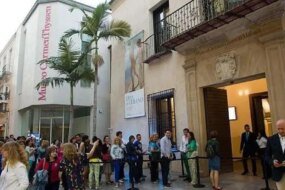During the first wave of NFT adoption in 2021 and 2022, Ethereum Mainnet was far and away the clear choice for high-value digital art and NFT collectibles. However, towards the end of the last market cycle, high-volume collectors on Ethereum started to express dissatisfaction with the substantial fees that they were incurring on two fronts: Ethereum Mainnet gas fees and NFT collection royalties. The result of this pushback was the rapid growth of the Blur NFT marketplace which heavily ate into OpenSea’s then-dominant market share with a platform that appealed to traders through its speed, lower gas-fee transaction contract and its refusal to enforce royalties.
The rise of Blur and layer-2 blockchains (including Blur’s own l2 named Blast) over the past couple of years has dramatically changed user expectations around fees. In 2021 and 2022, the Polygon Proof of Stake sidechain was the standard choice for blockchain users who wanted to pay cents per transaction rather than upwards of $50 per NFT swap on the Ethereum Mainnet. Since then, the incredible growth in the layer-2 ecosystem has been one of the biggest success stories in Web3. Layer-2 scaling solutions such as Arbitrum, Base, Optimism and Blast all have over a billion dollars worth of assets locked on their blockchains, millions of active wallets, and the average cost of transactions on the l2 chains is mere pennies. Even the transaction fees on Ethereum Mainnet have been reduced drastically due to the offloading of so much user activity onto the layer-2 chains, and an NFT sale on the mainnet currently costs less than $5 with average gas priced at under 2 gwei. With less congestion on the mainnet, it is, at least for now, more accessible than it has been in years.

The reason that this change in the Ethereum-centric blockchain landscape is so important to the future of the tokenized digital art market is because, while layer-2 blockchains solve the problem of high fees associated with digital art colleting and trading, they introduce a potential new conundrum, that being the fragmentation of liquidity.
Potential Liquidity Fragmentation
During the 2021-2022 bull run in digital assets and NFTs, liquidity was concentrated on the Ethereum Mainnet. However, now that the Ethereum ecosystem has scaled through layer-2 solutions, there is no longer one obvious choice for where artists and digital galleries should launch collections. How artists and gallerists navigate this new array of options will likely be one of the most important developments to watch over the next 18 months and the direction taken will determine whether the Ethereum Mainnet maintains its role as the de facto hub for tokenized digital art or whether liquidity will divert to one of the layer-2 solutions.
Of the plethora of layer-2s, Coinbase’s Base chain appears to be the best positioned to build out a distinct NFT culture due to its exponential user growth, strong foothold in United States and the fact that Coinbase has its own NFT marketplace. Generative art platform fx(hash) has been a participant in Base’s OnChain Summer initiative with new releases dropping on a weekly basis, and Base hosted a side event at Art Basel Miami last year. When it comes to the alternative layer-1 blockchains, Solana has emerged this market cycle as the clear winner. While its reputation as a memecoin casino is rightfully earned, one would be amiss to ignore Code Canvas, a highly curated generative art initiative native to Solana.










